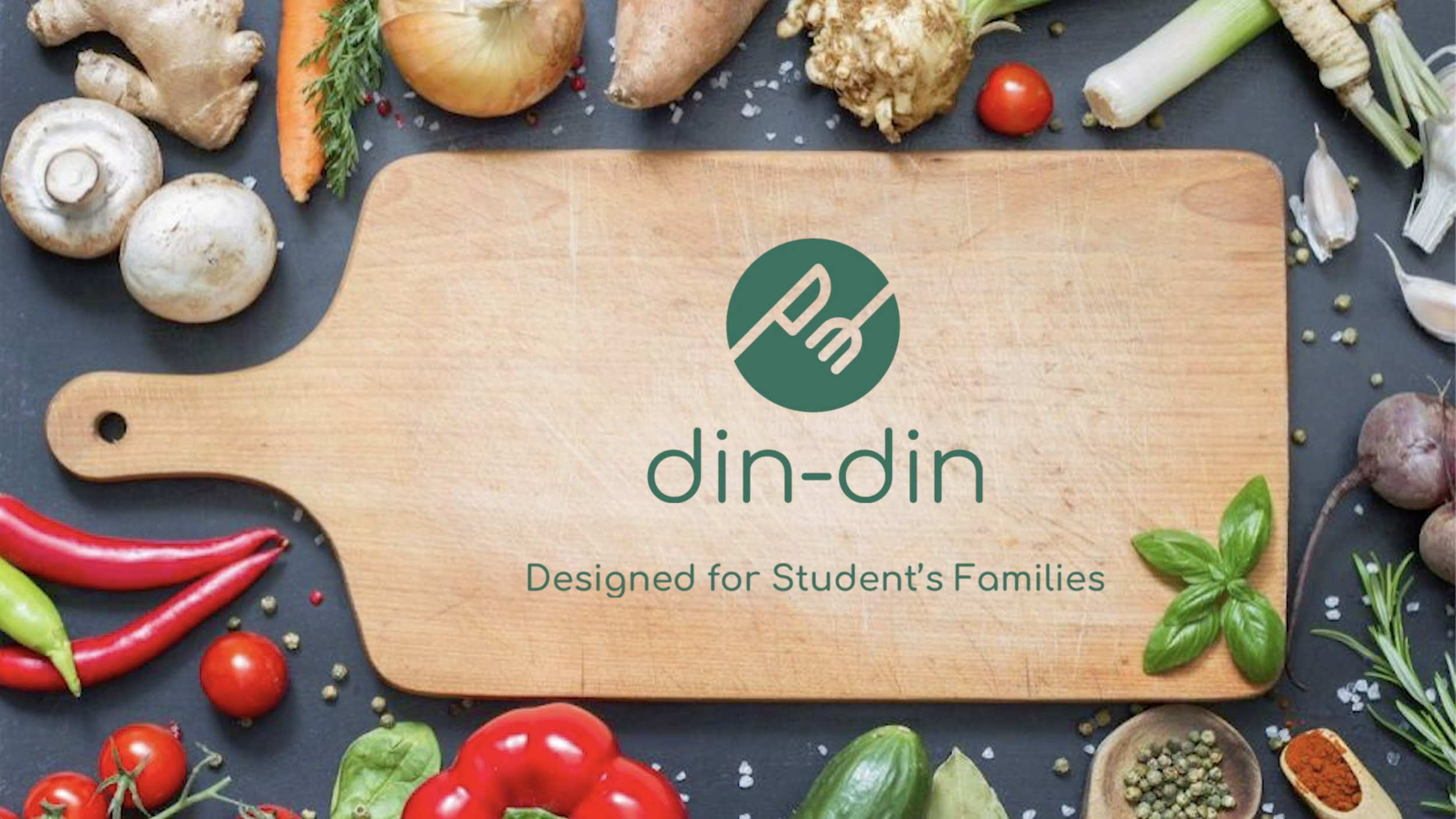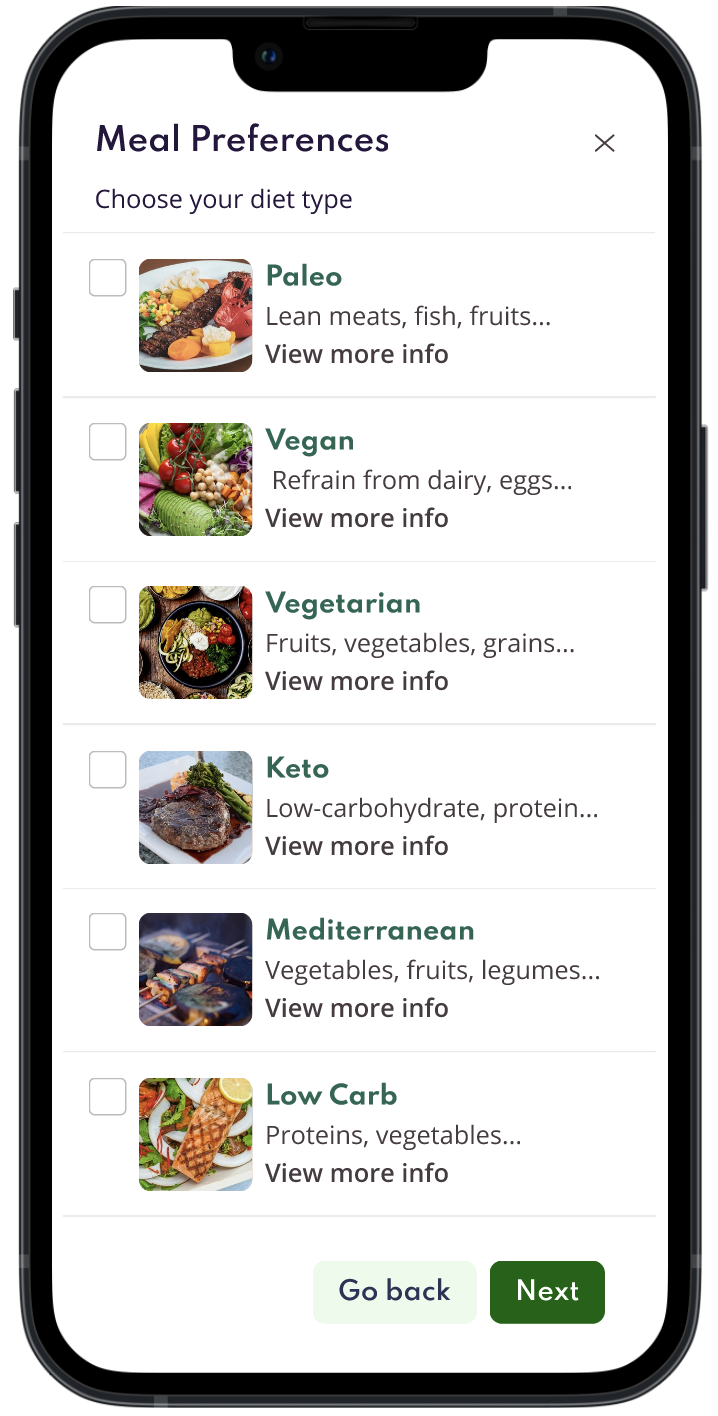din-din - A food delivery app that reduces cooking burdens and improves the mental and financial health of student families in Los Angeles.
Role
User Research & Interview, UX Design, Concept Design, User Testing, Motion Graphics of video & scriptwriting
Year
Fall 2021
Collaborators
Bin Gao, Miguel Jimenez
Understanding
PROBLEM
50% of the over 2 million people in Los Angeles County who face food insecurity are families with children. Although school-aged children in LA now get to eat breakfast, lunch, and dinner for free through the Universal School Meal Program Act., other people in their family who are not eligible for the program, such as their parents and younger siblings, are still in hunger.
INSIGHT
From our research, we’ve discovered that the majority of people suffering from food insecurity are single parents. Their jobs and housework are all on their shoulders. It makes cooking harder even if they do have money for food.
The Universal School Meal Program Act provides the same, heavily repeated menus. Moreover, the foods are designed to be easily distributed, like sandwiches or burgers, which are not very nutritious.
Food support from places such as food banks or food pantries, many times don’t accommodate the many different cultures and backgrounds of LA. In addition, parents who are facing food insecurity are often times very busy with multiple jobs.
SOLUTION
din-din: A food delivery program through the California Universal Meals Program for family members supported by LAUSD. This easy-to-use app and its variety of food choices better accommodate the many different cultures and backgrounds of LA and reduce families’ stress and burden toward cooking.
Design Challenge
How might we provide daily nutritious food to students’ families who can’t afford them moneywise and timewise by reducing their stress and burden toward cooking?
Our Users
Racquel experienced food insecurity due to escaping from her abusive ex-boyfriend during her pregnancy. She experienced homelessness while establishing a new life away from him, because he stole her identity and all her money.
“People say I am a strong woman, but why can’t I be weak?”
“Microwavable foods were more helpful because I didn’t always have the luxury to live where there was a kitchen.”
Eileen experienced food insecurity when her husband – without any notice – left her, her two children, and her mother-in-law. Eileen suddenly became the only income source in this 2-adult and 2-children family. Soon she got 3 jobs, but those 3 jobs combined weren’t enough to support her entire family.
“I worked and went to school to get a better job. I had no time for anything else.”
“Food stamps was not enough to cover the entire family’s food, but very useful. I was still able to pick the kind of foods we want to eat.”
User’s Needs
We noticed that there is a wide range of needs from these parents in regards to food. Here are 3 major types of patterns:
Grab-and-go type
Too busy with daily activities so they heavily rely on prepared foods which only takes a microwave to eat.
Eat-the-same-food type
Too busy to cook so they make a huge portion of just one menu item.
Sacrifice-health-for-their-children type
These parents are willing to cook for their children even though they don’t have enough time to do so. As a result, they sacrifice their spare time, many their sleep, in order to provide nutritious homecooked food.
How can we reduce the burden of cooking?
The Idea
What if we could provide their choice of groceries and/or prepared meals delivered to their door every week?
But How?
In order to solve this problem, we focused on to existing food programs and services. Starting from free food giveaway services to paid food delivery services, such as Food Banks, Food Pantries, Food Voucher, California Universal Meals Program, and plenty of paid food delivery services etc. there are plenty of food services that help partially solve food insecurity problems. They all have pros and cons, so why don’t we combine just the good parts!
We walked through and compared major existing food services in order to be in the busy parents’ shoes and understand the obstacles they face when receiving the existing services.
From the Analysis, these insights popped out:
Easy to Use Ordering System
Being a parent is busy. They simply have no time and patience to struggle with learning how to use an app.
Variety of Food Choices
With the various cultures and backgrounds of the people in LA, groceries or meals that accommodates one’s lifestyle is mandatory.
Choice between cooking or the microwave
Sometimes they simply don’t have time to cook. Healthy, nutritious ready-to-eat food will be a big help.
Prototype and User Test
In order for us to figure out the best usability app, we had repeated user tests with each of our prototype phases. The testees are all parents who are either single parents or have multiple children. The number one priority for them was how easy it is to use the app and how helpful the system could be. I was surprised that they all had different food preferences, many times even within their family. What they eat differ completely.
These are the testing Insights:
1 - Too many columns under the food choice makes it harder to choose.
Having 4 columns can avoid scrolling down forever. On the other hand, each of the pictures displayed is too small so it is harder to tell what the pictures are.
2 - Too much information needed to be filled in at the sign-up page.
Since this goes through the LAUSD system, it requires filling in children’s information, which can be too much.
3 - Too text heavy
Having nutritional information right in front of the menu choice page is convenient; however, it pushes down the next menu further down. As a result, it causes a lot of scrolling. Not being able to see choices at the same time makes it harder to make order decisions.
The Solution
din-din went through many design & layout enhancements based on feedback from our user tests. Since meals are an everyday thing, we do not want din-din to be additional burden towards their daily cooking, but give them joy using it instead. Having more than double the amount of menu and ingredient choices from the average food delivery service was our struggle. How do we display it so it’s easy to see? With that solved, I’m sure it gives excitement to users when they see it.
Easy Sign Up page
Since this app works together with the LAUSD food program, the user simply types the approval code from the issuing school and the app is ready to use.
Variety of Dietary Options
Users can customize their dietary preference from more than double the amount of choices from the average food delivery service
Navigation Bar
Having a navigation bar for ready-to-cook, ready-to-eat, and side dishes keep users from having to scroll forever.
Protein and Ingredient Options
The user can easily substitute the main protein by simply clicking the picture. Together with diet and opt-out options, this program allows meal choices to better accommodate the many different cultures and backgrounds of LA.
Reflections
There are tons of food services available in Los Angeles but why hasn’t the food insecurity problem been solved yet? This was my first impression when we started this design challenge. Then further research and interviews lead me to an answer. It’s not solved because they don’t accommodate people’s true needs.
Unlike many other places in the United States where Caucasians are the majority, the minorities of Los Angeles are a major part of the population. Different cultures, backgrounds, ethnicities, countries of origin, etc. are the standard here. Considering that, of course what people eat varies too. Moreover, here in LA, even among the same race and cultural background, people’s diets vary so much such as vegan, keto, pescatorian... The food insecurity solution varies in proportion to the city’s diversity of people because food is part of people’s identities. “You are what you eat” by Anthelme Brillat-Savarin not only implies a healthy body, but also applies mentally. That being said, just because people cannot afford food by themselves, it doesn’t mean their identities can be ignored. The huge realization through this project for me is that putting the food insecurity problem into consideration is also being considerate of human rights.
Since the din-din app is designed using the best of everything from existing services and apps, it solves many problems that any one existing service or app can’t solve. We have also received feedback from parents with school-aged children that they could see themselves using din-din and having their cooking burdens reduced.















